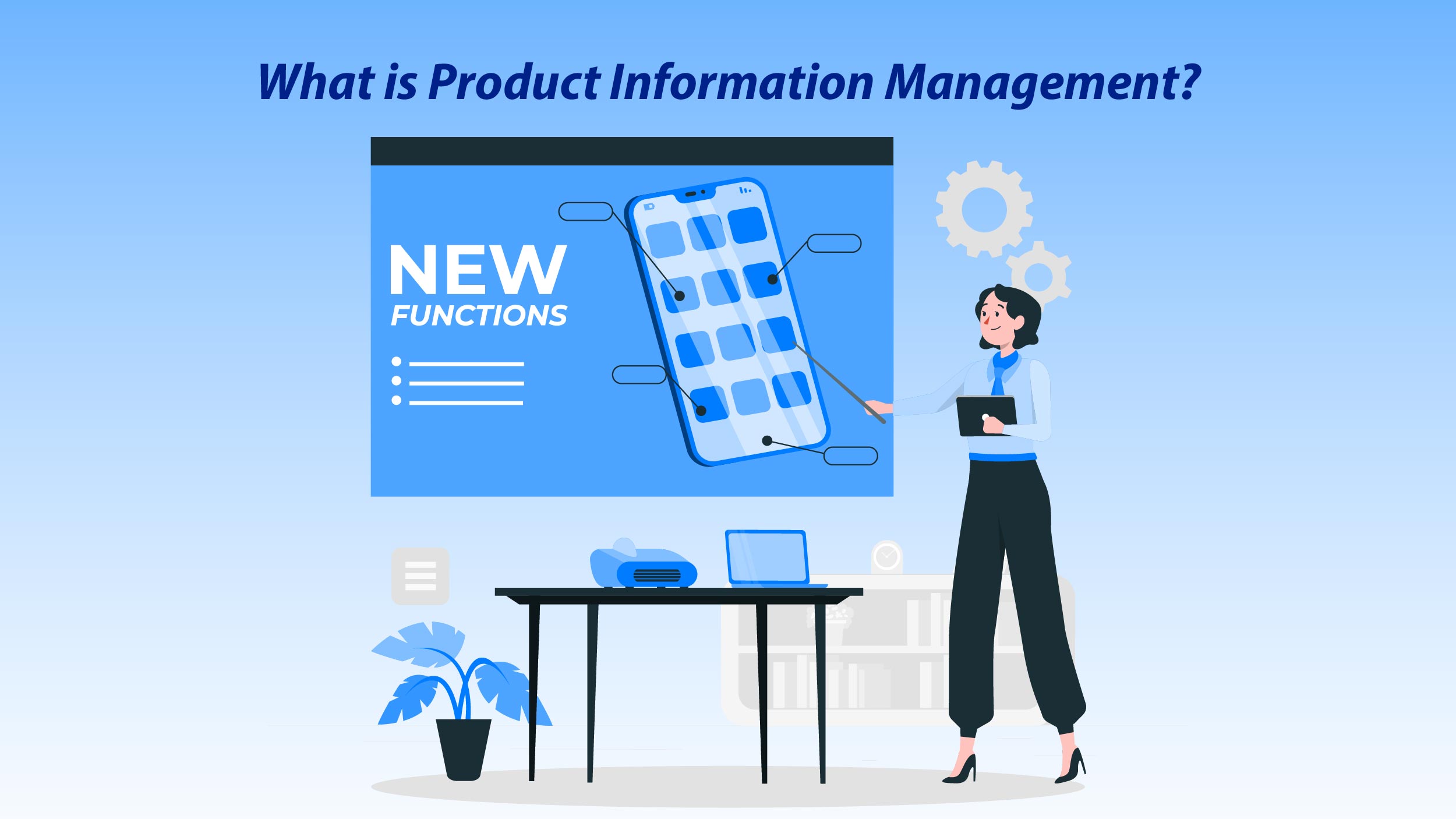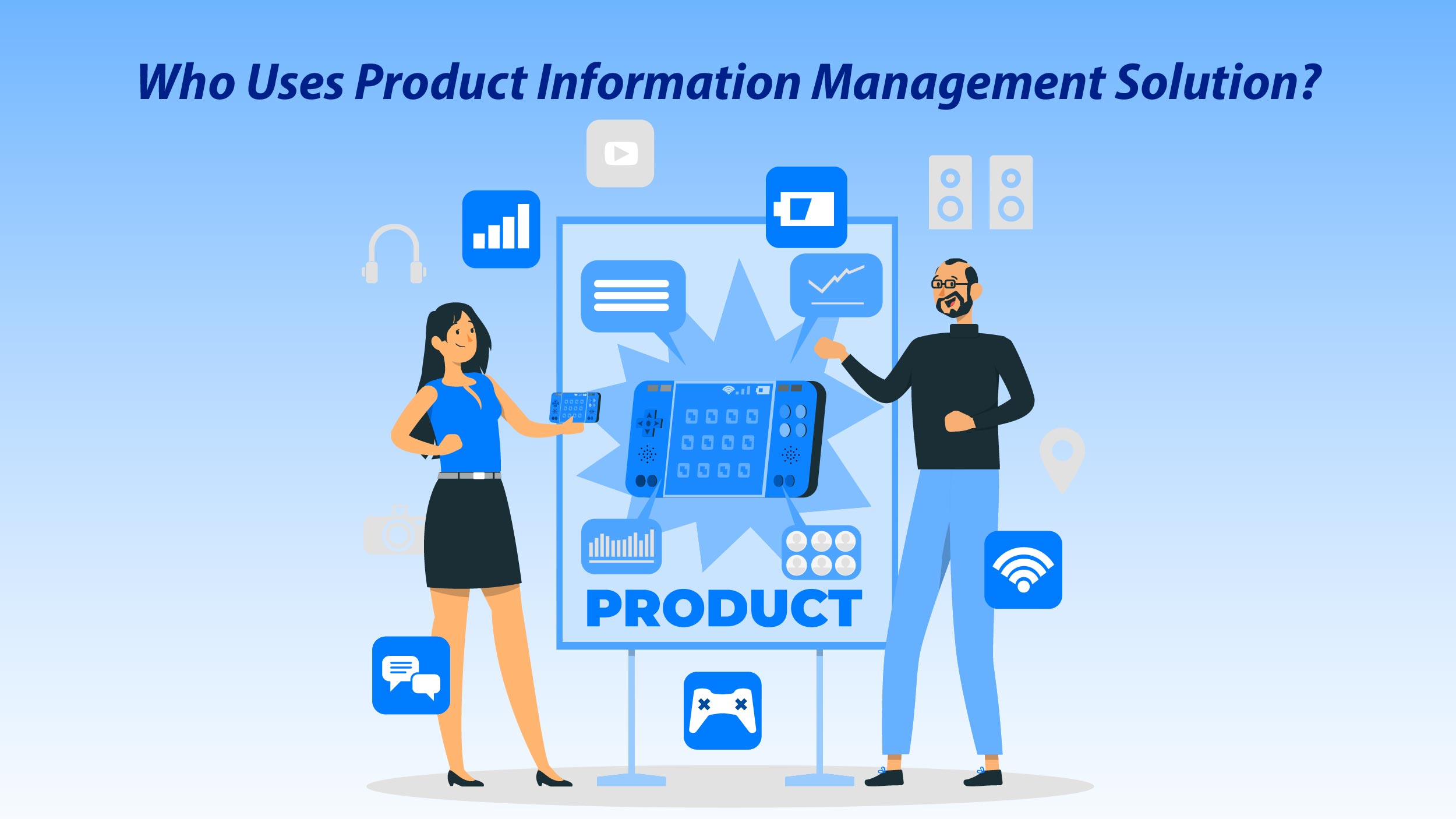In the dynamic landscape of modern commerce, selling a product involves more than simplicity. Evolving consumer demands, regulatory compliance, and marketplaces require comprehensive product information management for success. Beyond facilitating sales, this data is a tool for compliance, personalization, and growth, serving as a universal language to communicate sustainability standards, craft omnichannel strategies, and forge deeper connections with target markets. As businesses navigate these diverse needs, the question arises: What is PIM?
Let’s dig in to find out an appropriate answer to this increasingly asked question.
What is Product Information Management?

Product information management, also known as PIM, is the practice of effectively overseeing and improving the information pertaining to products on various selling platforms. This encompasses a wide range of product-related content and digital assets, such as images, videos, personalized renderings, and product categorization.
The objective of PIM is to enhance your sales performance across various channels by ensuring a seamless and engaging shopping experience. The primary aim is to achieve this while optimizing your presence across omnichannel and multichannel touchpoints.
What is a PIM Platform?
A PIM platform serves as a comprehensive tool for overseeing the extensive array of data necessary for effective marketing and sales across different distribution channels. These platforms greatly contribute to the optimization of product information, enhancement of customer satisfaction, and boosting sales by effectively managing the intricacies of the omnichannel experience.
A product information management software enhances the capability of organizations to supply reliable, comprehensive, and pertinent product data to digital platforms. This empowers them to overcome the decline in in-store sales and build resilience in the market. Take the renowned apparel company PVH as an example. By implementing a PIM solution, PVH has significantly boosted its e-commerce operations, achieving a 50% overall increase in e-commerce sales. This includes an impressive 87% surge in sales on their proprietary websites compared to the previous year.
Benefits of Product Information Management
According to the survey, the majority of the surveyed companies (74%) express a desire to implement a Product Information Management (PIM) solution primarily to mitigate the occurrence of data inaccuracies and errors.
Also Read : How to Start Digital Farming: A Step-by-Step Guide [Tips & Tricks Revealed]
Key advantages of implementing the product information management system include:
- Accelerated time to market
- Enhanced brand loyalty
- Efficiently selling a wider range of products, seizing cross-sell and upsell prospects
- Streamlined workflows and collaborative data enrichment for improved operational efficiencies
- Elevated product data quality, ensuring compliance with industry standards
- An enriched, engaging omnichannel product experience.
How Does Product Information Management Work?
A PIM solution or tool functions by optimizing internal processes, enabling organizations to provide their customers with consistent, precise, and top-notch product information. Consequently, brands enhance customer satisfaction and omnichannel experiences, ultimately leading to increased revenue generation.
PIM tools empower teams to:
- Gather data: Centralize all product-related information in a master profile within the system for seamless organization.
- Integrate data: Safeguard your reputation and ensure data consistency by enabling designated users or system admins to import product data from external sources into the PIM platform.
- Enhance data: Expedite time-to-market by allowing users to enrich product data with marketing copy, digital assets, and collaborative product workflows.
- Link data: Furnish e-commerce partners, print publishers, websites, and various channels with updated exports featuring the latest product information.
Who Uses Product Information Management Solution?

PIM solutions play a vital role for businesses spanning various industries and sectors:
Brands: Omnichannel commerce has emerged as a vital aspect in various industries such as fashion, furniture, and consumer electronics. To alleviate the labor-intensive task of distributing product data across multiple channels, optimizing the digital shelf, and managing product launches, PIM software comes into play. By utilizing this software, brands can concentrate on creating a compelling and cohesive brand story.
Manufacturers: A PIM system for B2B is designed to optimize and assist manufacturers with their extensive product information management requirements. This system caters to the complexities of product portfolios, extensive B2B distribution networks, and the need for granular details and contextual data from buyers.
Retailers: Maintaining consistency across various channels is crucial for both customer experience and achieving success in omnichannel strategies. PIM platforms serve as effective tools for retailers to guarantee that the digital shelves are properly stocked, promotional activities are synchronized, and channels or applications have accurate information to effectively cater to their target market.
Distributors: A PIM system allows distributors to effectively manage their inventory by keeping thorough records of their product portfolios. This helps minimize returns, optimize SKU efficiency, and expedite new product launches into the market.
Top 3 Product Information Management Systems in 2024
Now, let us examine several of the leading PIM solutions currently available in the market.
1. Contentserv Product Experience Platform
The Contentserv PIM platform offers a versatile and expandable solution for delivering product experiences across various channels. Through the use of different data management technologies, Contentserv PIM enables the gathering of data from various suppliers. Subsequently, this data is utilized by users to create personalized and superior-quality content.
2. Precisely EnterWorks
EnterWorks is a comprehensive enterprise PIM system that offers a unified platform for the acquisition, management, and distribution of product data across diverse channels. Additionally, the platform incorporates an automated workflow that facilitates collaboration among various stakeholders and systems. Moreover, this product information management software enables users to effectively manage intricate business-to-business-to-consumer (B2B2C) relationships throughout their content value chain.
3. IBM’s InfoSphere Master Data Management
The InfoSphere MDM serves as a foundation for PIM and collaborative data management, featuring a user-friendly interface to establish a centralized product repository. It consolidates product data from upstream systems, ensuring accuracy through enforced business processes and synchronization. Additionally, it seamlessly integrates with other MDM applications and offers a collaborative workflow.
To Conclude
Product information management emerges as the cornerstone for navigating the complexities of modern commerce. Beyond facilitating sales, PIM empowers businesses to achieve regulatory compliance, foster personalization, and drive growth. By embracing PIM, organizations unlock the potential to communicate effectively, streamline processes, and establish a robust foundation for sustained success in today’s dynamic market.




